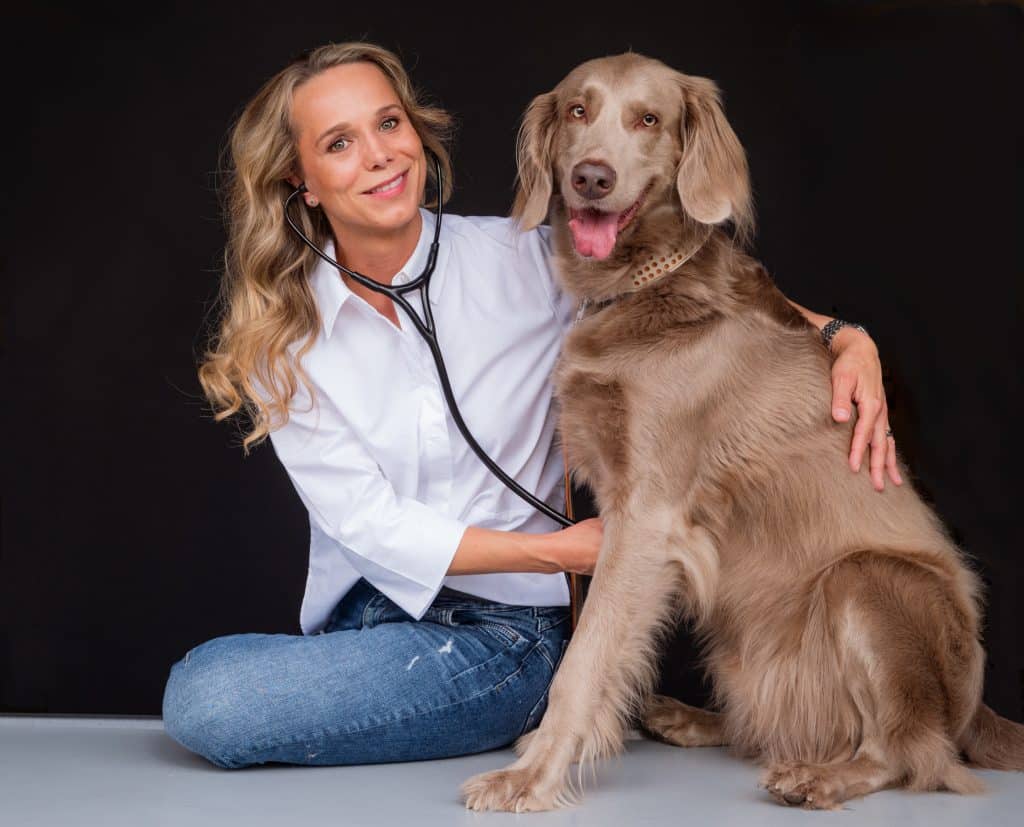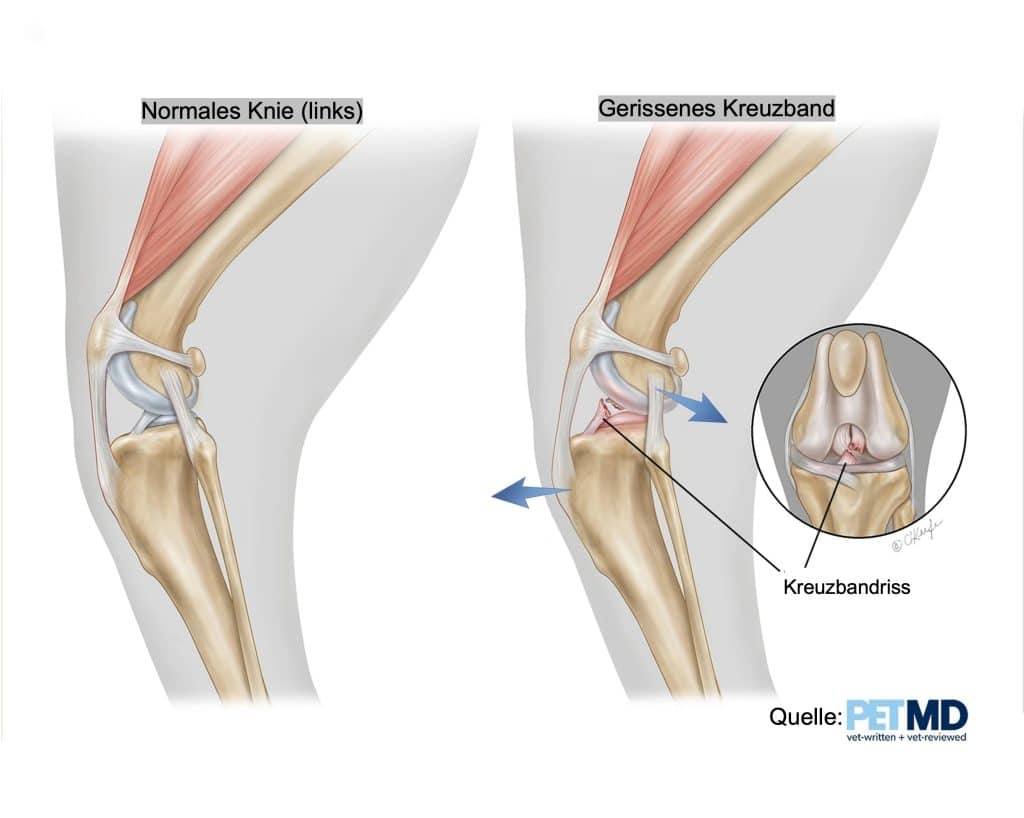Cruciate ligament tear dog
Anterior cruciate ligament tears are very common in dogs. Since it is often difficult for dog owners to judge which treatment method is the right one, we are happy to share our experiences here.
Hello, my name is veterinarian Susanne Arndt
I am the owner & medical director of the doc4pets group
Cruciate ligament rupture in dogs: Unlike in humans, where the cause is usually of a sporting nature, this is rarely the case in dogs. Since some dogs are prone to cruciate ligament tears due to their constitution and animals stand and walk differently than humans, surgical techniques from human medicine should not simply be transferred to dogs. Unfortunately, it is inevitable that dogs with torn or torn anterior cruciate ligaments end up on the operating table. On this page we want to give you answers to questions like:
- How bad is a torn cruciate ligament in a dog?
- How much does cruciate ligament surgery on a dog cost?
- How long does it take for a dog to be able to walk again after a cruciate ligament tear?
- How do I recognize a torn cruciate ligament in my dog?
- What should I do if my dog tears his cruciate ligament?
- Can a torn cruciate ligament in a dog heal on its own?
01
Symptoms
Here we explain the anatomy of the knee in dogs and explain how you can recognize a torn cruciate ligament in your dog.
02
diagnosis
In this section we will look at how a veterinarian can clearly diagnose a torn cruciate ligament in a dog.

03
Methods
In this section we explain all common cruciate ligament surgery methods (TPLO / TTA / ZLig / Meutstege etc.) for dogs with their advantages and disadvantages and which breeds seem suitable.
04
Aftercare
Just as important as the correct surgical technique is adequate aftercare in the form of physiotherapy and pain treatment.
These factors promote a degenerative cruciate ligament tear in dogs:
✓ Older age : The older the dog, the more unstable and less resilient the knee joint is.
✓ Increased body weight : Cruciate ligament tears occur more frequently the heavier the dog is.
✓ Overload - If the knee joints are unevenly or incorrectly loaded due to too little, too much or incorrect movement, small cruciate ligament tears can gradually occur.
✓ Previous illnesses : Inflammation of the knee joint or a congenital dislocation of the kneecap ( patellar luxation ) can increase the risk of cruciate ligament rupture in dogs.
However, there is also a ✓ hereditary component to cruciate ligament tears:
a steep position of the lower leg (tibial plateaus). In dogs with a very steep joint surface of the lower leg, the loads on the anterior cruciate ligament are significantly higher. With every step, the lower leg is pushed forward and puts strain on the anterior cruciate ligament. This predisposition to steep lower leg position is hereditary.

Which dogs are particularly affected?
In principle, the phenomenon of cruciate ligament rupture can occur in any dog. However, there are some dog breeds that have a genetic predisposition to cruciate ligament tears and are therefore affected more often than other dogs. Dog breeds at risk include:
- rottweiler
- Newfoundland
- Golden retriever
- Labrador retrievers
- boxer
- Staffordshire terriers
- West Highland Terriers
- Dobermans
What happens if you don't have surgery for a torn cruciate ligament on your dog?
Without surgery, if a cruciate ligament is torn, there is always the risk that the dog will no longer be able to perform and osteoarthritis . It cannot be cured and is associated with severe pain. For this reason and because large anatomical forces act on the cruciate ligaments in dogs, most veterinarians advise against treating a cruciate ligament tear in dogs conservatively.
So there really is no alternative to surgery.
The healing time without surgery is difficult to define because there is often no talk of healing, the knee remains permanently unstable and osteoarthritis only develops later.
If only the cruciate ligament is torn , it may be worth waiting and not having the dog operated on yet. Small breeds and light dogs have the best chance of recovering from a cruciate ligament tear without surgery. The aim of the treatment is then to relieve the knee as much as possible physiotherapy , rest and a change in diet
With or without surgery , it is important for the dog to exercise regularly because strong muscles stabilize and support the injured joint. A dog physiotherapist who uses targeted training to restore strength and mobility in equal measure can also help in this case. The dog owner should also make sure that the dog is not overweight - the less weight the damaged joint has to bear, the better.
Some successful cruciate ligament operations
Last year alone we performed over 120 cruciate ligament operations on dogs due to a diagnosis of cruciate ligament rupture in dogs:
A bilateral cruciate ligament operation using our Petlig Method®
8 days after surgery
Cruciate ligament surgery using the TPLO method
